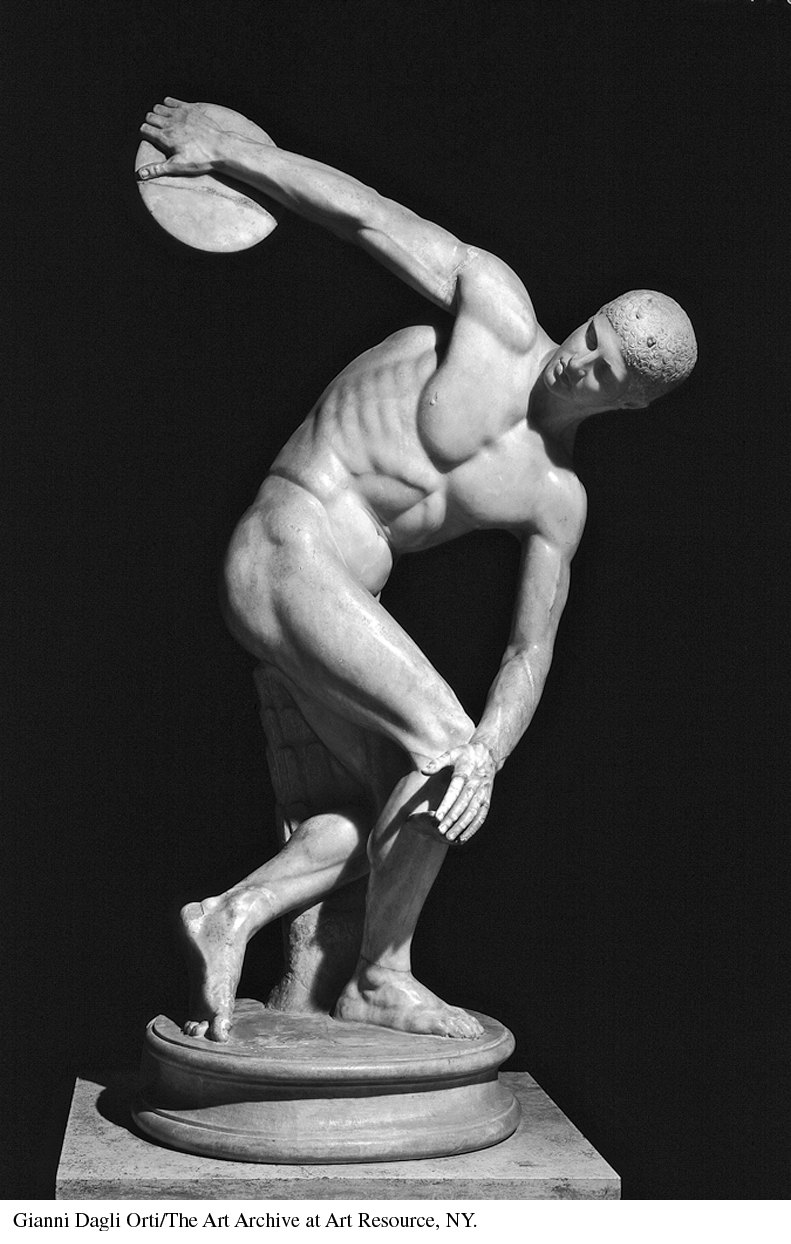2. Movement in Stone
Printed Page 60
Myron of Eleutherai, Discus Thrower (c. 450 B.C.E.)
According to Thucydides, Athenians were innovators, not emulators. Although this statement applies to many facets of the Greek Golden Age, it is perhaps nowhere more visible than in its art. Greek sculptors abandoned the stiffness characteristic of earlier statues and replaced it with a new style of human movement. The Discus Thrower by Myron (c. 480–440 B.C.E.) is among the most renowned examples of this type of statuary. The figure is presented in arrested motion as he swings his arm back, about to fling the discus. A favorite sport in ancient Greece, discus throwing was part of the Olympic pentathlon competition. Originally sculpted in bronze, the Discus Thrower is known today only through later Roman copies; even then it inspired admiration among viewers. As the Roman rhetorician Quintilian proclaimed in the first century C.E., “Where can we find a more violent and elaborate attitude than that of the Discus Thrower of Myron? Yet the critic who disapproved of the figure because it was not upright, would merely show his utter failure to understand the sculptor’s art, in which the very novelty and difficulty of execution is what most deserves our praise.”

DISCUSSION QUESTIONS
- Why do you think Myron chose this pose rather than an upright one? How did his choice contribute to the statue’s sense of motion?
Question
Why do you think Myron chose this pose rather than an upright one? How did his choice contribute to the statue’s sense of motion?
accept_blank_answers: true
points: 10Why do you think Myron chose this pose rather than an upright one? How did his choice contribute to the statue’s sense of motion? - Compare the ways in which the athlete’s body and face are portrayed in the sculpture. What differences do you see? Do these differences add anything to the statue’s overall visual effect?
Question
Compare the ways in which the athlete’s body and face are portrayed in the sculpture. What differences do you see? Do these differences add anything to the statue’s overall visual effect?
accept_blank_answers: true
points: 10Compare the ways in which the athlete’s body and face are portrayed in the sculpture. What differences do you see? Do these differences add anything to the statue’s overall visual effect? - In what ways does this statue reflect the Greeks’ newfound confidence in human potential for beauty and perfection?
Question
In what ways does this statue reflect the Greeks’ newfound confidence in human potential for beauty and perfection?
accept_blank_answers: true
points: 10In what ways does this statue reflect the Greeks’ newfound confidence in human potential for beauty and perfection?